Explainer
Agriculture Affects Deforestation Much More Than Most People Realize
Climate•7 min read
Investigation
When climate technology breaks down, the results can be deadly.
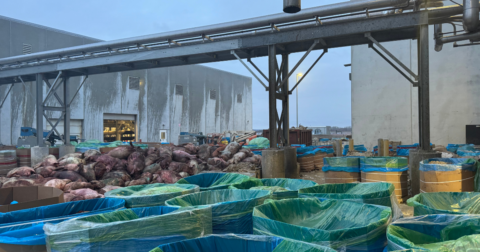

Words by Nina B. Elkadi
After Steven Barrows left his job at a hog slaughtering facility in Sioux City, Iowa, he sent a tip to the Environmental Protection Agency. In the tip, received by the EPA April 16, Barrows described the parking lot of Seaboard Triumph Foods LLC as a “dump site for rotten meats.” He also sent photos — some displaying dead pigs piled up outside of the building and others showing a smoky, noxious gas wafting inside. A representative for the EPA has confirmed to Sentient that they received a complaint, but has provided no further comment.
Seaboard Triumph Foods is a joint venture between two leading pork producers, Triumph Foods and Seaboard Foods. The latter touts anaerobic digesters as proof of its environmental stewardship, a way to “harvest” biomethane for renewable energy. Manure from pork production is a major source of agricultural methane emissions — typically second only to dairy according to EPA assessments.
Anaerobic lagoons are also a way to contain and manage hog waste. At Seaboard Triumph, the lagoons collect the manure, blood and guts of thousands of hogs. The waste is flushed or piped into the lagoons, where anaerobic bacteria breaks down the organic material in order to extract the biogas.
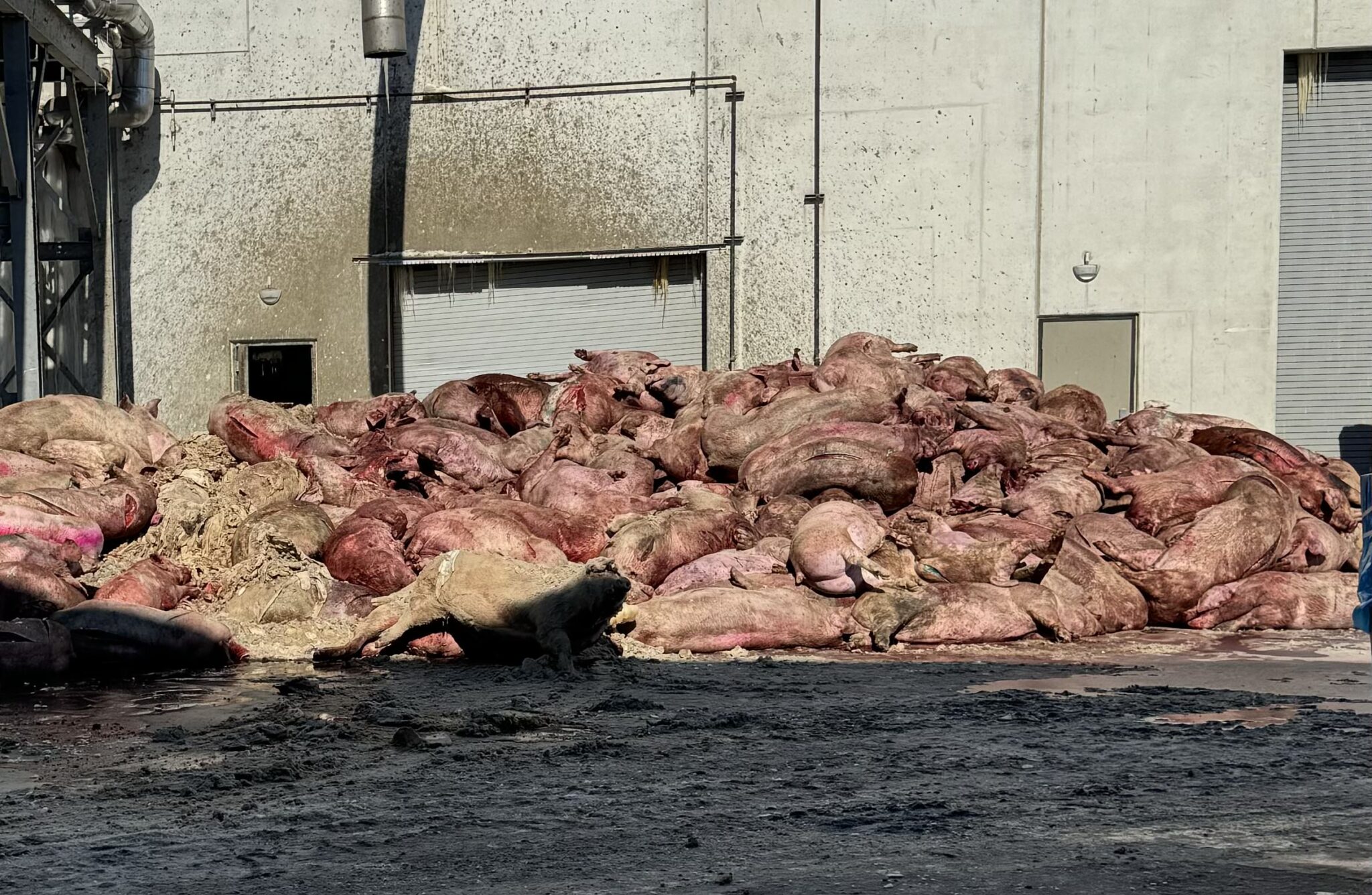
There are a number of byproducts created during anaerobic digestion. One of these, hydrogen sulfide, is a corrosive gas. Often the process of purifying biogas into biomethane involves using a “scrubber” to remove the hydrogen sulfide and other contaminants. But if too much biogas is produced during the digest process, operators destroy it by burning or flaring the methane.
As methane is flared, hydrogen sulfide becomes toxic sulfur dioxide, and too much sulfur dioxide can be hazardous. For years, the Seaboard Triumph plant emitted sulfur dioxide into the Sioux City air, which can cause serious respiratory issues to anyone exposed.
In an interview with industry news outlet The National Provisioner, Seaboard Triumph’s vice president and general manager said, “We all have one common goal, and that’s doing pork the right way.” According to photos and video reviewed by Sentient from inside of the plant, “doing pork the right way” includes stacking dead pigs multiple feet high inside and outside of the facility and emitting hazardous gases into the atmosphere.
In its short lifetime as a business, Seaboard Triumph Foods has already racked up fines for numerous environmental penalties and labor violations — including failure to pay workers, safety risk violations and utilizing a contractor that hired underage workers.
The facility has been cited by the Iowa Department of Natural Resources for both failing to keep records of its emissions and exceeding biogas emission limits for sulfur dioxide when it does keep them.
Seaboard Triumph was fined $7,000 by the Iowa Department of Natural Resources on March 7, 2025, for 1,920 hours of air quality violations. These fines account for a mere fraction of Seaboard Triumph’s revenue. “They make that in a minute,” Barrows, who worked there for approximately five years, tells Sentient. The company slaughters approximately 20,000 to 22,300 hogs each day, and exports to 26 countries.
Multiple photos and videos obtained by Sentient show animal waste lining the floor of the facility, as well as pooled outside. The floor is lined with so many decomposed hogs that wooden walkways were placed over their bodies for employees to get across.
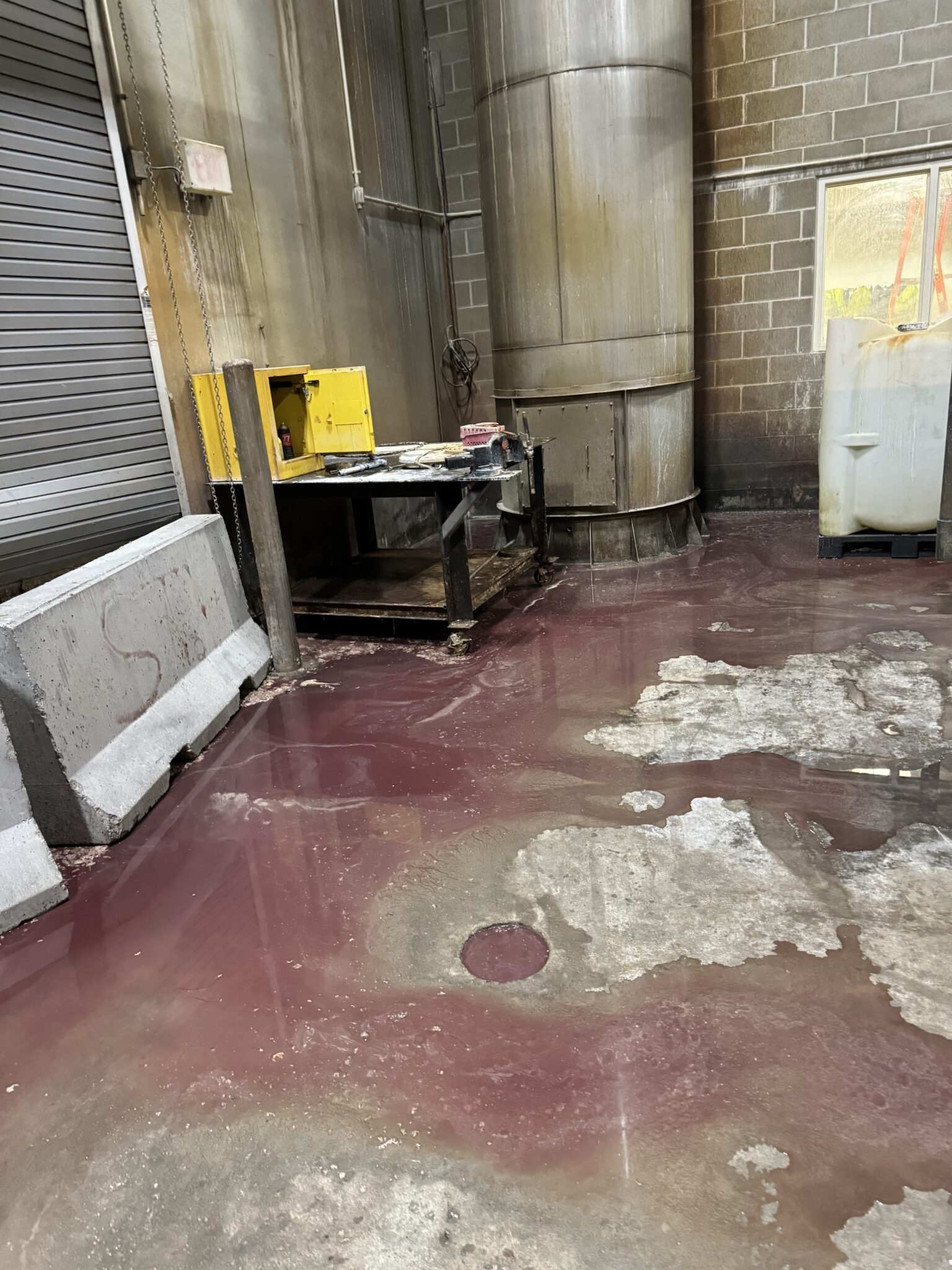
One photo shows what appears to be animal waste seeping into the office.

First formed in 2015, the Seaboard Triumph plant now employs 2,800 people. “When it comes to people, animals, the environment, and the food we produce,” the company touts on its website, “our #1 commitment is safety.”
The almost one million square foot hog slaughtering facility was issued 15 air quality construction permits in 2015, and in April 2018, the facility had its first Iowa Department of Natural Resources inspection. According to documents reviewed by Sentient, Seaboard Triumph failed to keep required monthly records and did not have natural gas and biogas meters installed. They were also in violation of five of their construction permits.
Barrows quit his job there in 2025, citing health concerns. He tells Sentient he was constantly hacking and coughing when he got off work. He also says he made several complaints to management and safety about his concerns. “I actually got blacklisted to advance my career there because I was considered a troublemaker for making my complaints,” he says.
In his complaint to EPA, Barrows wrote that the smoke within the building contains hydrogen sulfide gas, which he was concerned about. In a video obtained by Sentient, cloudy smoke can be seen filling a room.
“You could take a copper penny and set it on your desk in your office, and within three days, that copper penny would be black from this stuff that’s in the air,” Barrows says of his time working at the facility, illustrating the corrosive effect of hydrogen sulfide on a copper penny.
Photos from inside the Seaboard Triumph Foods facility show multiple incidents of smoky conditions indoors. Barrows tells Sentient that when he went to report his concerns about the poor air quality, he was told that the air quality was good, since management kept an eye on the monitors.
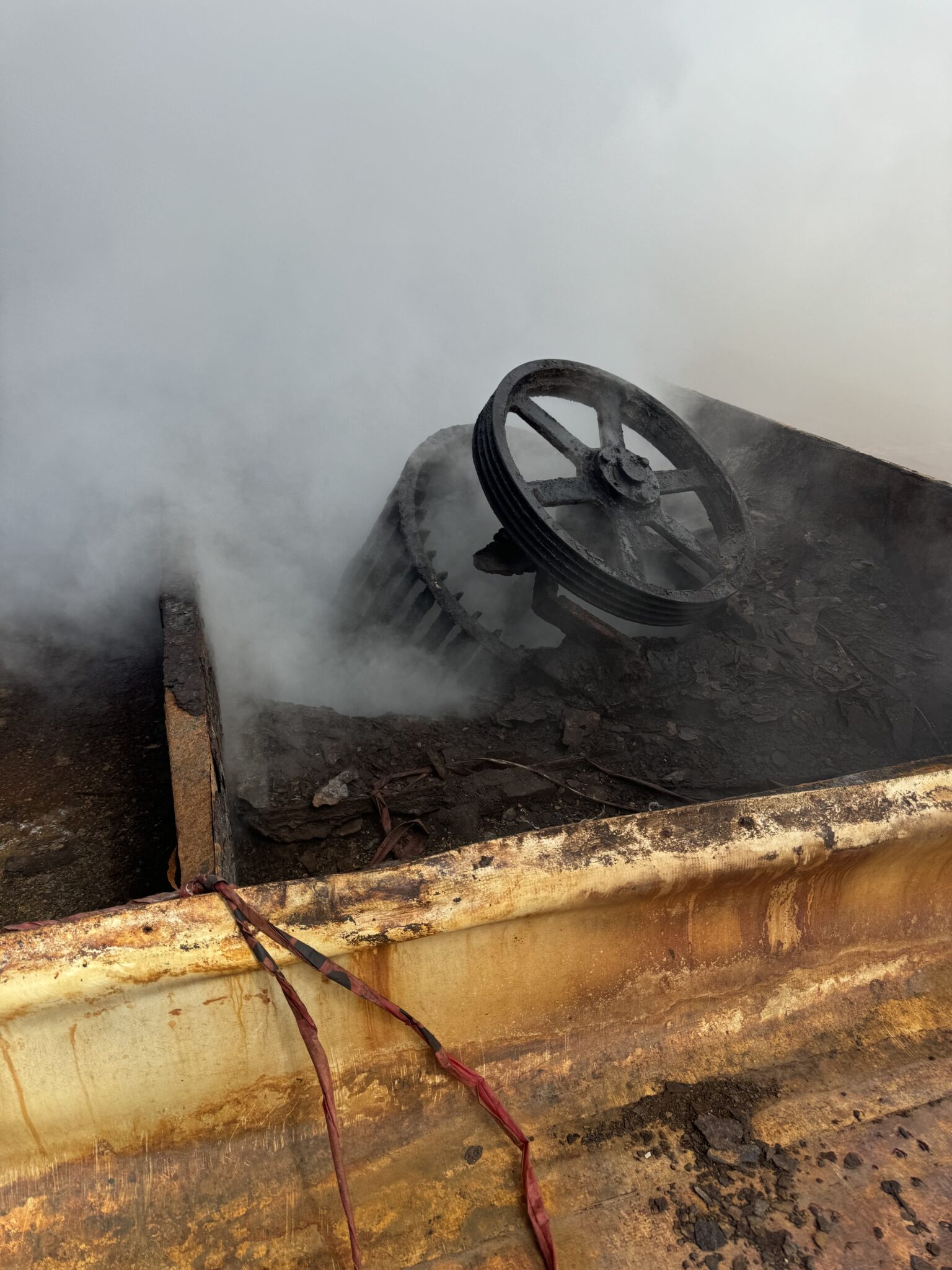
That did not track with what Barrows was seeing for himself on the monitors. “Well, do you have a monitor that I could check myself? Because the monitor we have back there is giving us a constant alarm, saying H2S gas is high,’” he recalls saying. “So either ours is wrong or yours is wrong.”
Over the course of several months in 2023, the Department of Natural Resources directed Seaboard Triumph to make changes to get into compliance. The company requested more time, then eventually submitted more data, and was found to still be in violation of the permit. On November 3, 2023, the DNR requested a formal compliance plan from Seaboard Triumph.
Barrows says he approached company management multiple times about the working conditions. They told him that they had a “plan in place.”
“As long as we have a plan in place, they can’t do anything,” Barrows recalls being told. “It doesn’t matter when it gets done. As long as we have a plan in place.”
In February 2024, the facility’s hydrogen sulfide readings were still excessive: One reading measured emissions at 12,089 parts per million volume, over three times the 4,000 parts per million volume limit. From March to October 2024, Seaboard Triumph submitted more data. Each month they exceed their permit limit. In March 2025, the DNR issued Seaboard Triumph a penalty of $7,000. One thousand for their failure to resolve issues after 2018, $3,000 for the gravity of the violation and $3,000 for the economic benefit of delaying compliance.
“They were putting off doing what needed to be done for as long as possible, basically to keep making as much money as possible,” Silvia Secchi, professor and director of undergraduate studies at the University of Iowa School of Earth, Environment, tells Sentient. “The cost of the fine is so low that it is much more profitable to be non-compliant.”
Barrows agrees.
“If they could pay a $7,000 fine for seven years and not have to install a $2 million system, yeah, they’re gonna keep paying the fine.”
“What’s it like living in Sioux City?” The Siouxland Observer’s Gary Dickson writes, recalling a conversation with a friend. “It’s not as bad as it smells.” In fact, it used to be even worse.
The smell of manure, or ammonia, can burn your eyes as you drive through the American Midwest. On a windy day, if the wind blows just right, it will sting your eyes.
Sioux City has been a meatpacking town since the late 1800s. The first large-scale hog slaughtering operation in town was built right after the first railroad, in the 1870s, and from there Sioux City became one of the most prominent livestock markets in the country. The stockyards were in operation for approximately 115 years, shutting down for good in 2002.
“Sioux City, growing up, used to be known as Sewer City,” a high-profile source with extensive knowledge of the area tells Sentient. “The stockyards were right off the interstate, and so was the sewage plant. We were never known for being a wonderful smelling city, unfortunately.”
The source describes how, growing up, the notion that the meatpacking plants smelled bad just came with the territory.
In the town of approximately 85,000, a little over 60 percent of residents are white. The Hispanic population sits just under 22 percent, a larger proportion of the population than the United States as a whole.
In 2010, a division of Smithfield Foods, John Morrell & Co., closed in Sioux City, resulting in 1,450 job losses. When Seaboard Triumph Foods came in, the source says, company management was convinced that they would need to bring in immigrant laborers; Seaboard Foods Chief Executive Officer even told reporters that he was working with the state of Iowa to make Sioux City a refugee resettlement location.
It didn’t add up. “We just had a workforce that got laid off,” the source says. “And here they’re saying there’s not enough workforce. It was very weird from the very beginning.”
While Sentient is not able to verify the demographic breakdown of employees at Seaboard Triumph Foods, in 2018, 37.5 percent of slaughterhouse workers in the U.S. were foreign-born. When Seaboard Triumph allegedly recruited Micronesian citizens under false pretenses to work in the plant, the scheme received national attention and scrutiny.
“There is extensive evidence that the people who work in these facilities tend to be disproportionately undocumented,” Secchi says, referring to slaughterhouses in general. Because of this, she says, the number of employees experiencing health issues could be underreported, as undocumented workers could face the risk of deportation for speaking up.
In some photos and videos reviewed by Sentient, hog carcasses can be seen piled up outside and inside. In photographs of the hogs outside, their skin is still pink, in some photos blood can be seen seeping out below them. One video shows animal waste flowing into a drain in the ground.
Seaboard Triumph Foods LLC does not have a water quality permit. According to the Iowa Freedom of Information Act office, STF discharges to Sioux City. According to the source Sentient spoke with, the facility has caused a strain on the city wastewater treatment plant.
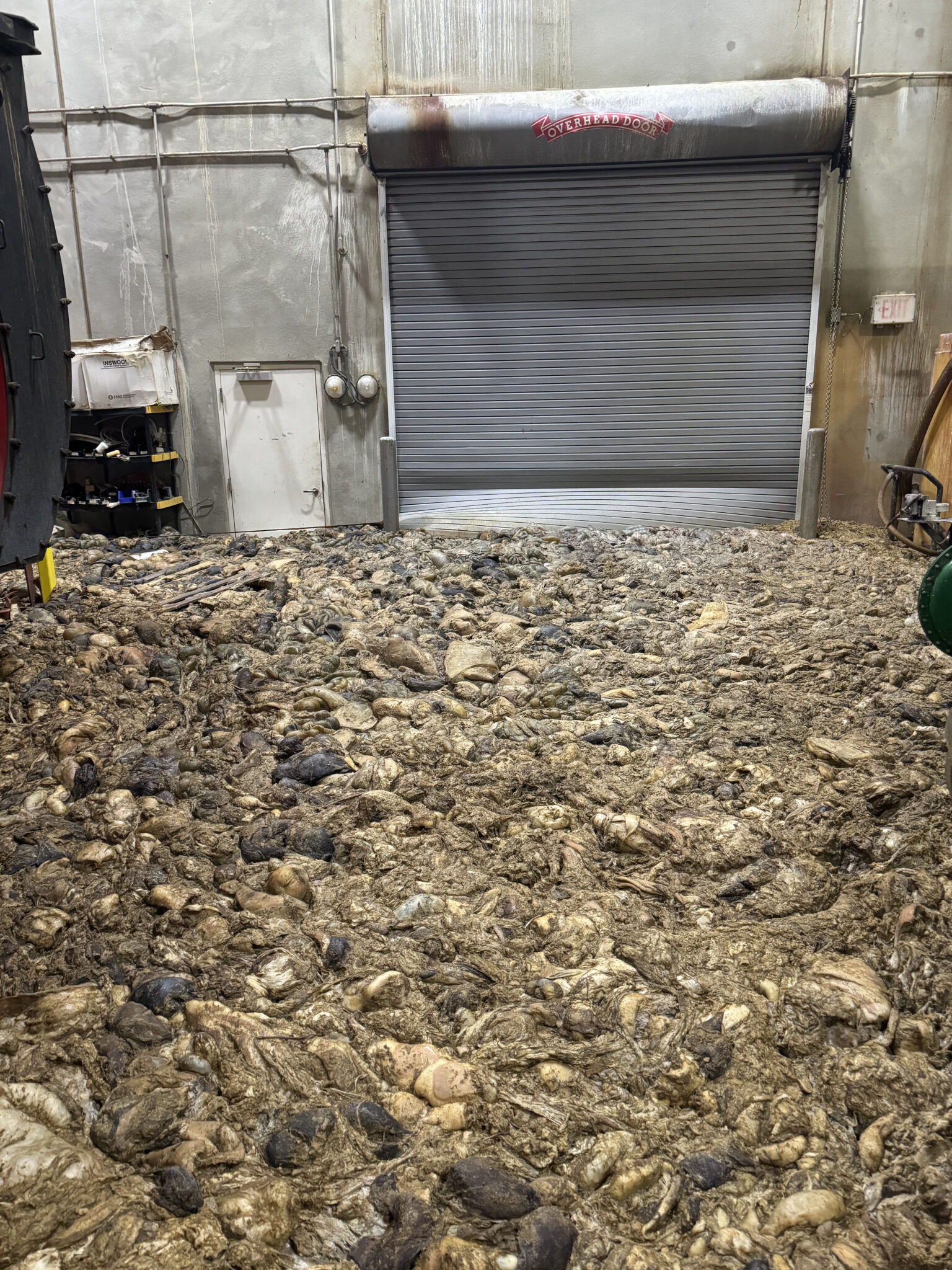
Without a permit, “these guys are not supposed to discharge anything at all” to the local water system, Secchi says. Commenting on photographs of dead hog carcasses, Secchi calls this “the tail end of a whole system that is extraordinarily dysfunctional.”
The Iowa Department of Inspections, Appeals & Licensing — where Iowa Occupational Safety and Health Administration is now housed — wrote to Sentient that an investigation has been opened and cannot comment further until the investigation is complete.
Sentient also reached out to the Iowa Department of Natural Resources and Seaboard Triumph Foods LLC and has yet to hear back for a comment.